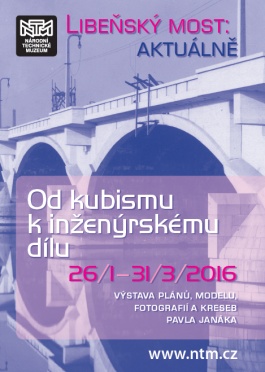
Technical Museum opened an exhibition about the Libeň Bridge
Prague - The National Technical Museum has opened a small exhibition about the Libeň Bridge at its architecture exhibition. It includes a plaster model, period materials, photographs, and drawings from the estate of the bridge's designer, architect Pavel Janák. The museum aims to contribute to the discussion about the future of the bridge with this exhibition, which will last until the end of March. The city of Prague is determining how to repair it. In recent days, the Ministry of Culture has initiated proceedings to declare the bridge a heritage site.
The future of the Libeň Bridge will be discussed by the Prague City Council on Thursday. However, it is uncertain whether the meeting will take place, as part of the opposition and former coalition agree that it would be wiser to wait for the verdict from the Ministry of Culture. Until the ministry issues a final decision, Prague must treat the bridge as if it were already a heritage site. The city management has been planning the bridge's repair for years, which critics, both laymen and architects, argue would mean its demolition.
"The direct threat to this significant architectural and engineering work, somewhat worn from years of neglected maintenance, is related to several years of considerations about its demolition and replacement with a new, wider bridge with greater capacity, even though this nearly ninety-year-old engineering work survived the great flood of 2002 with honor," says the author of the exhibition at the technical museum, Petr Krajči. According to him, the significance of the bridge is also evidenced by the fact that the period plaster model of the bridge has been part of the permanent exhibition of Architecture, Construction, and Design at the NTM since 2011, and the work is presented among the significant achievements of 20th-century architecture.
Visitors to the technical museum can familiarize themselves with period materials from the time of the Libeň Bridge's construction in the intimate exhibition. Featured are the original plaster model of the bridge arch with a staircase, Janák's original plans and drawings, and period photographs that illustrate the architect's comprehensive approach to the design of the engineering structure as a work of art.
In addition to the bridge, the exhibition also presents other works by Janák from the early 1920s, such as the Škodův Palace on Jungmannova Street and the Automobile Club of the Czechoslovak Republic on Opletalova Street, which illustrate his journey from Cubism to a distinct sculptural puristic expression, in which the Libeň Bridge played a fundamental role.











